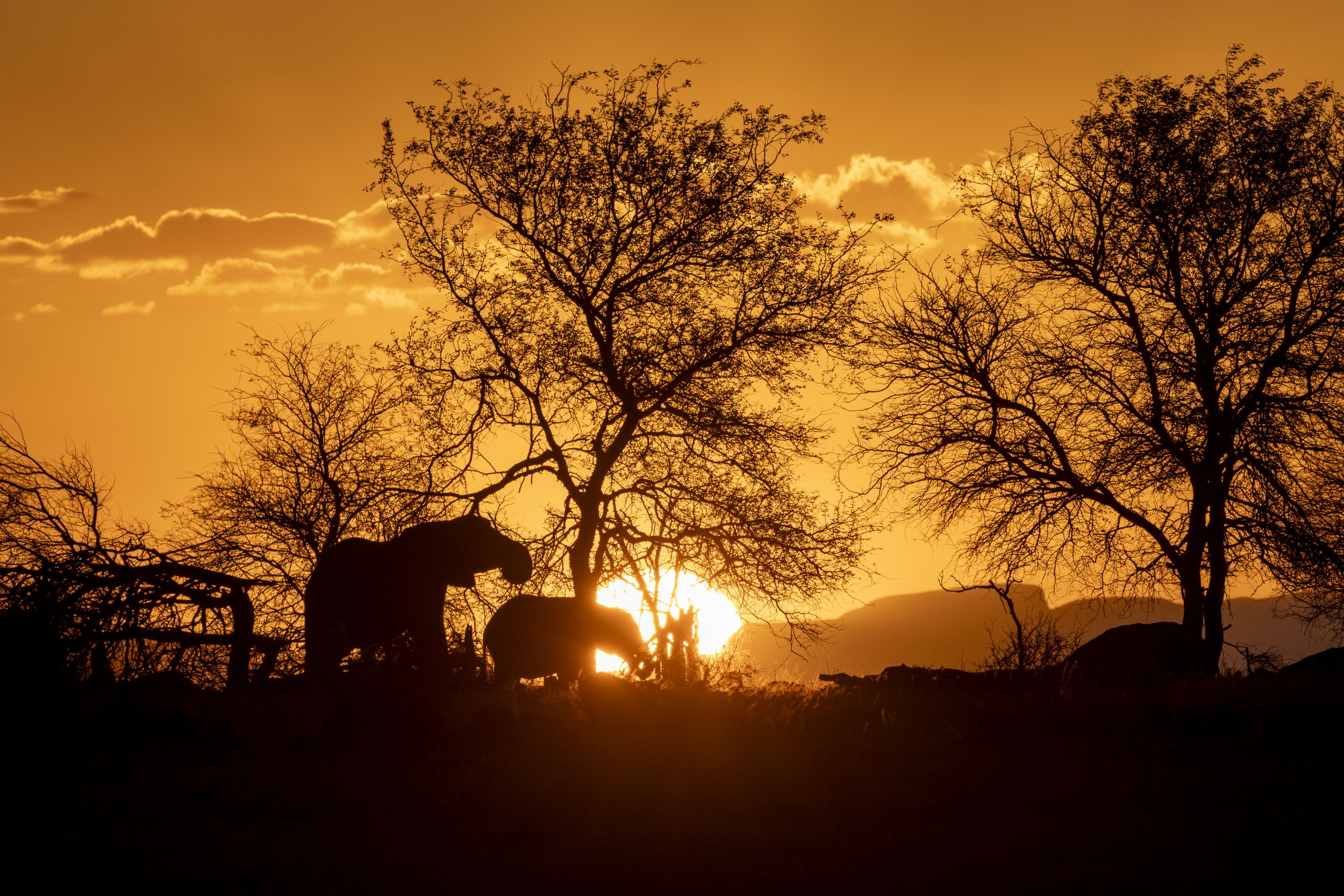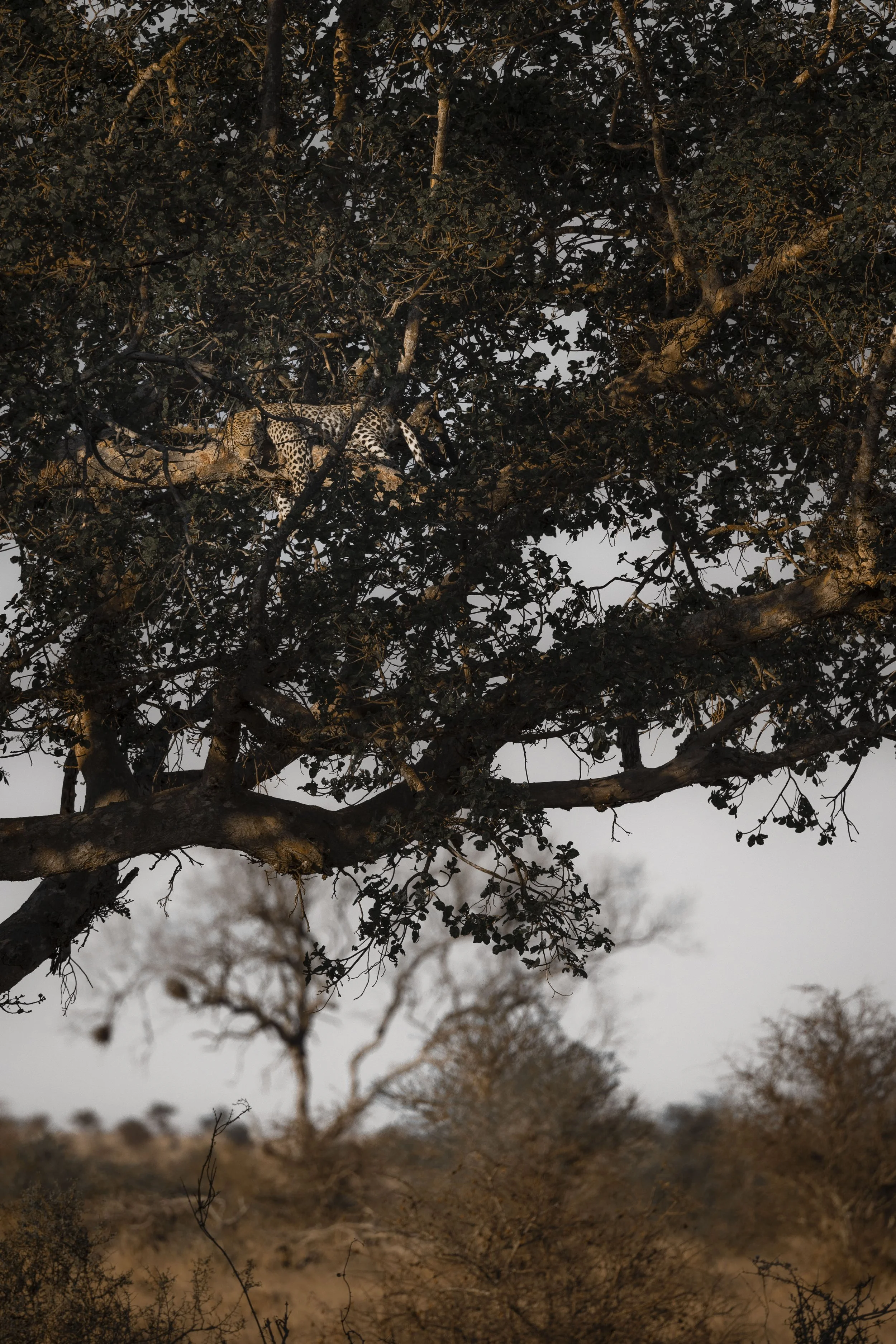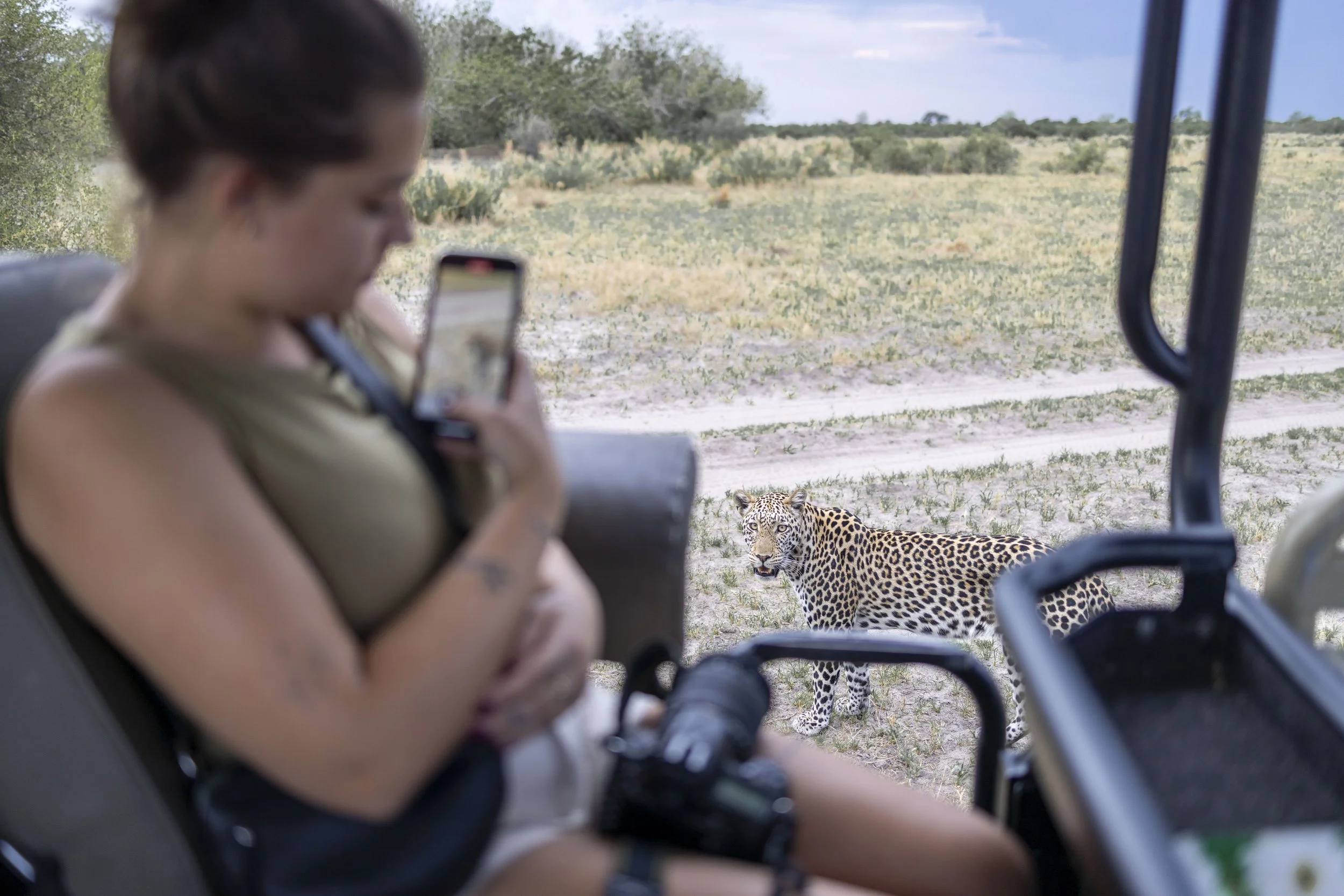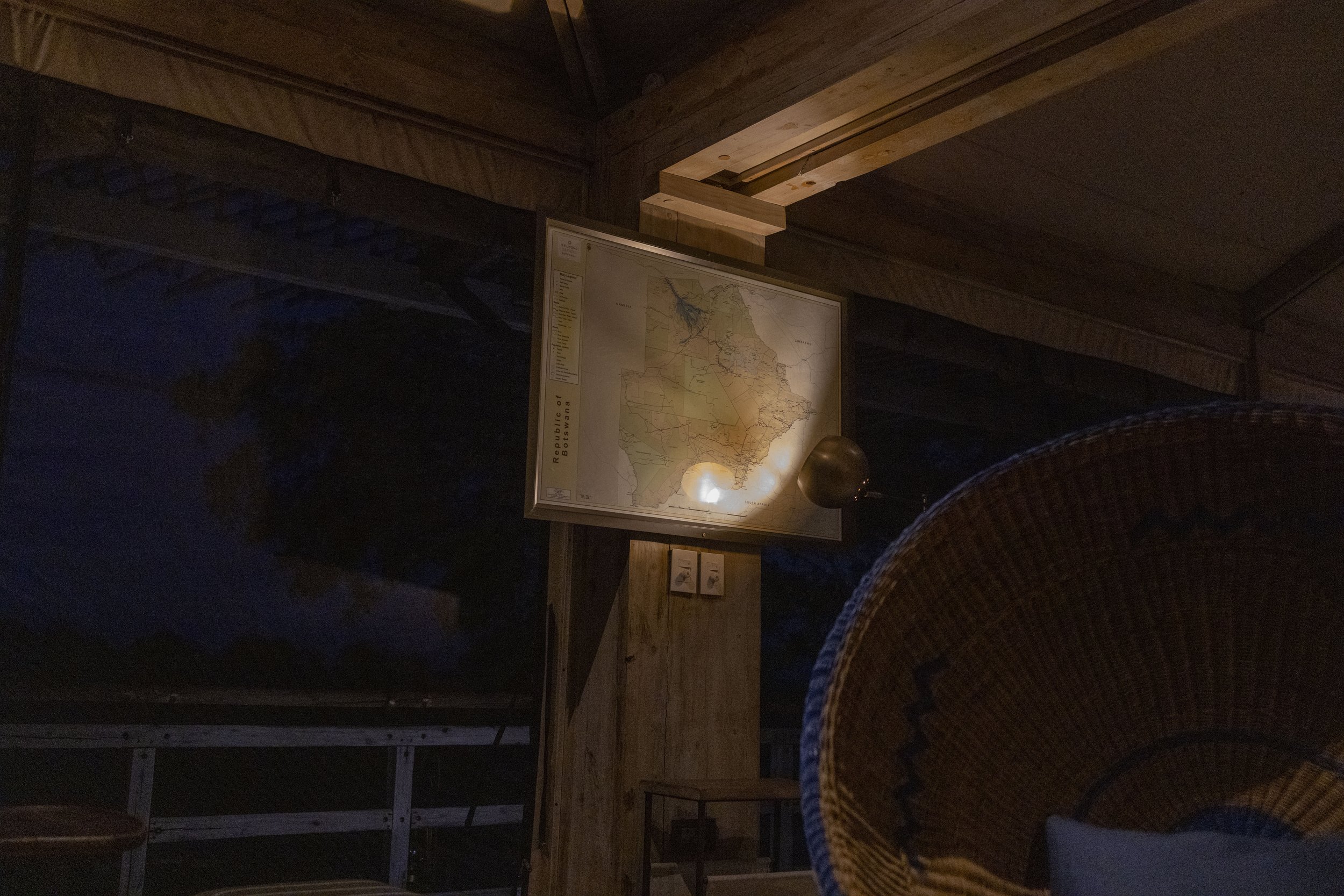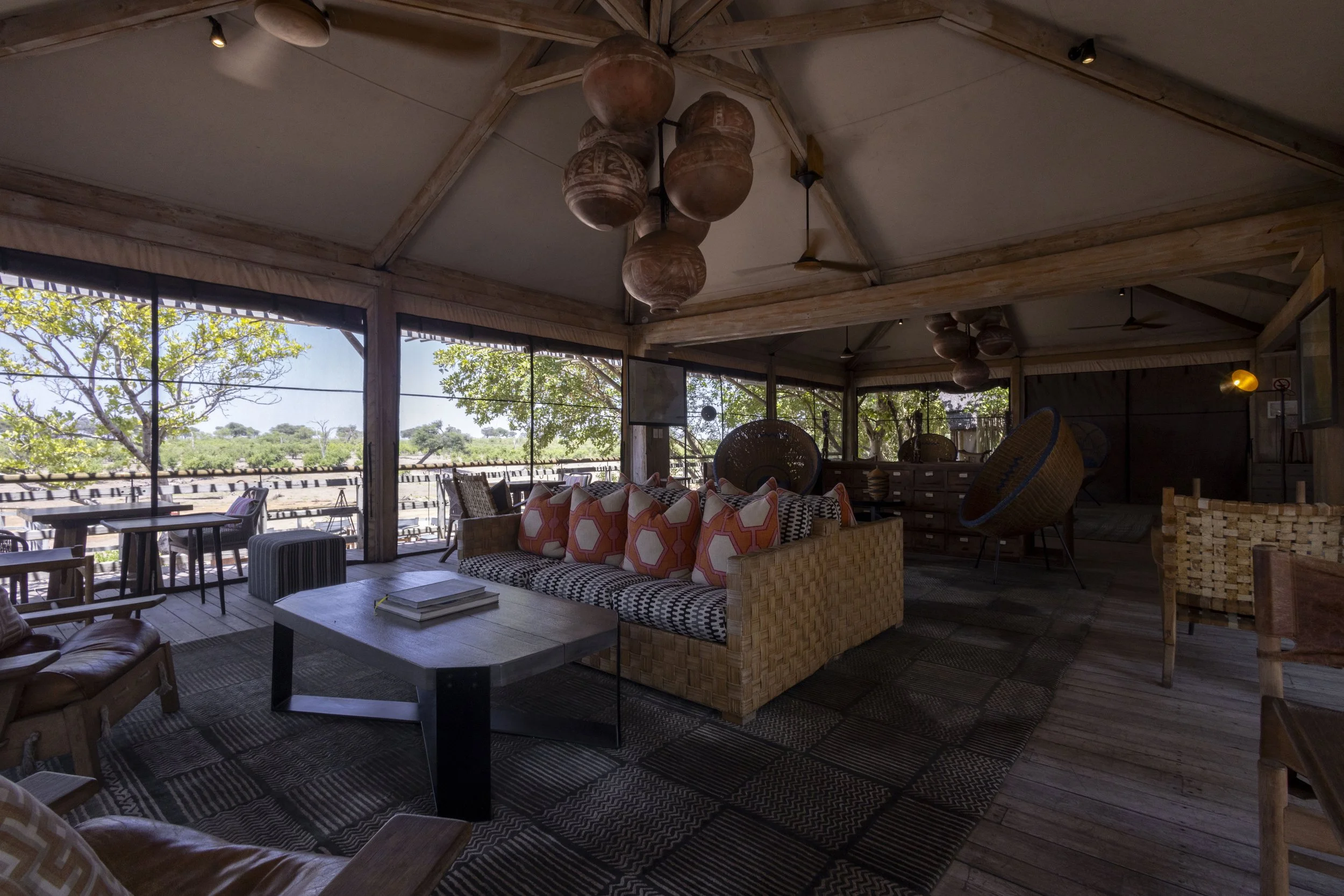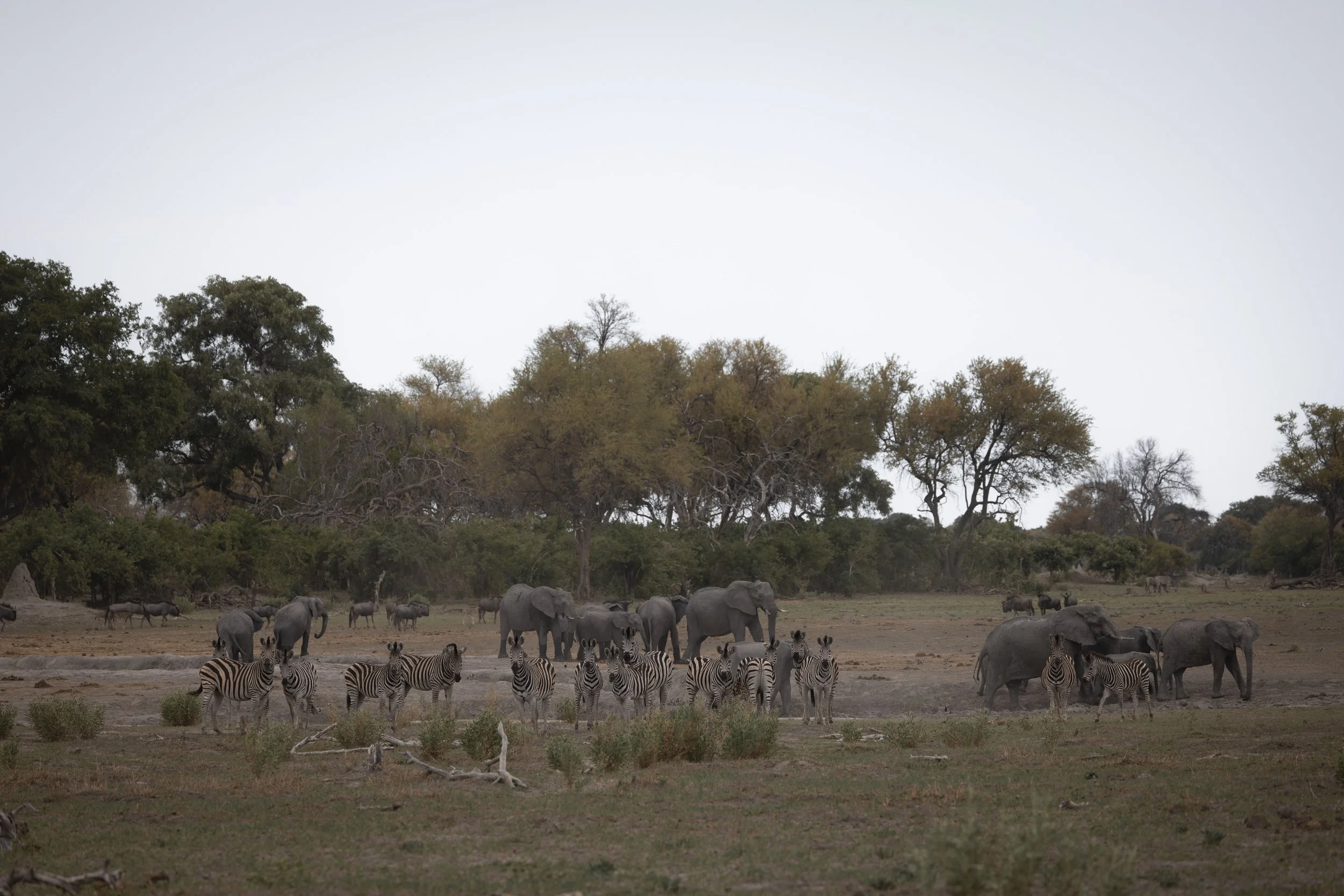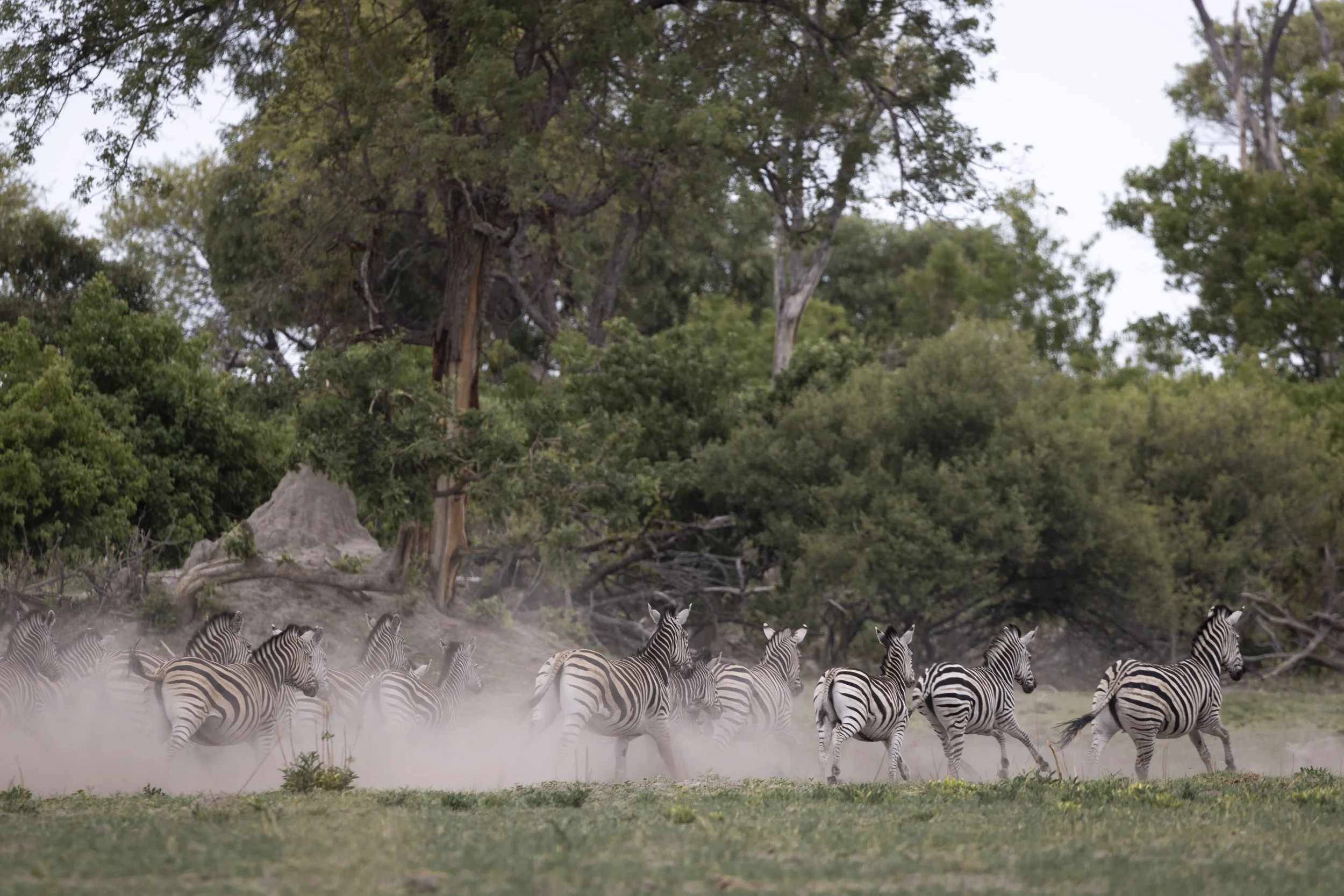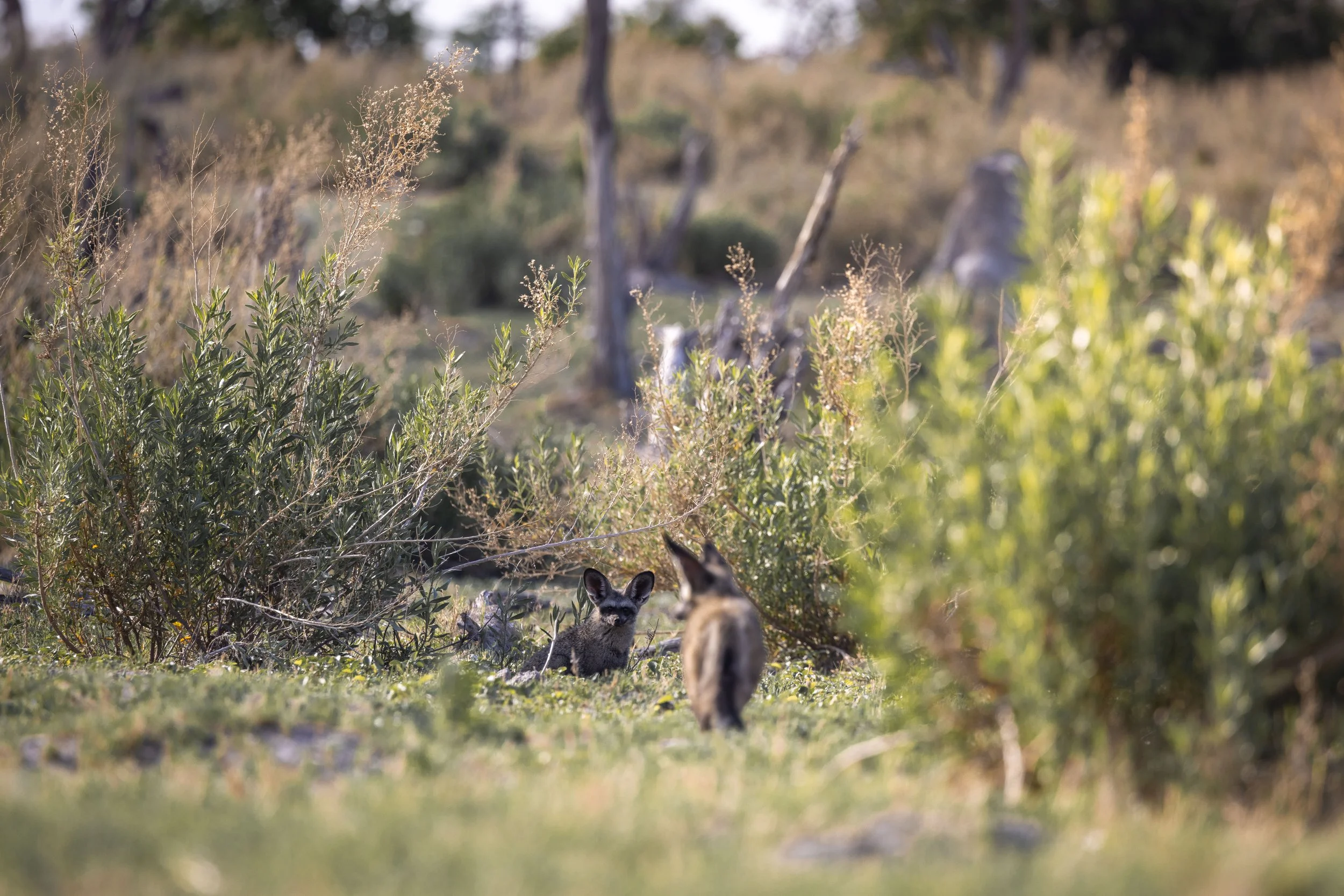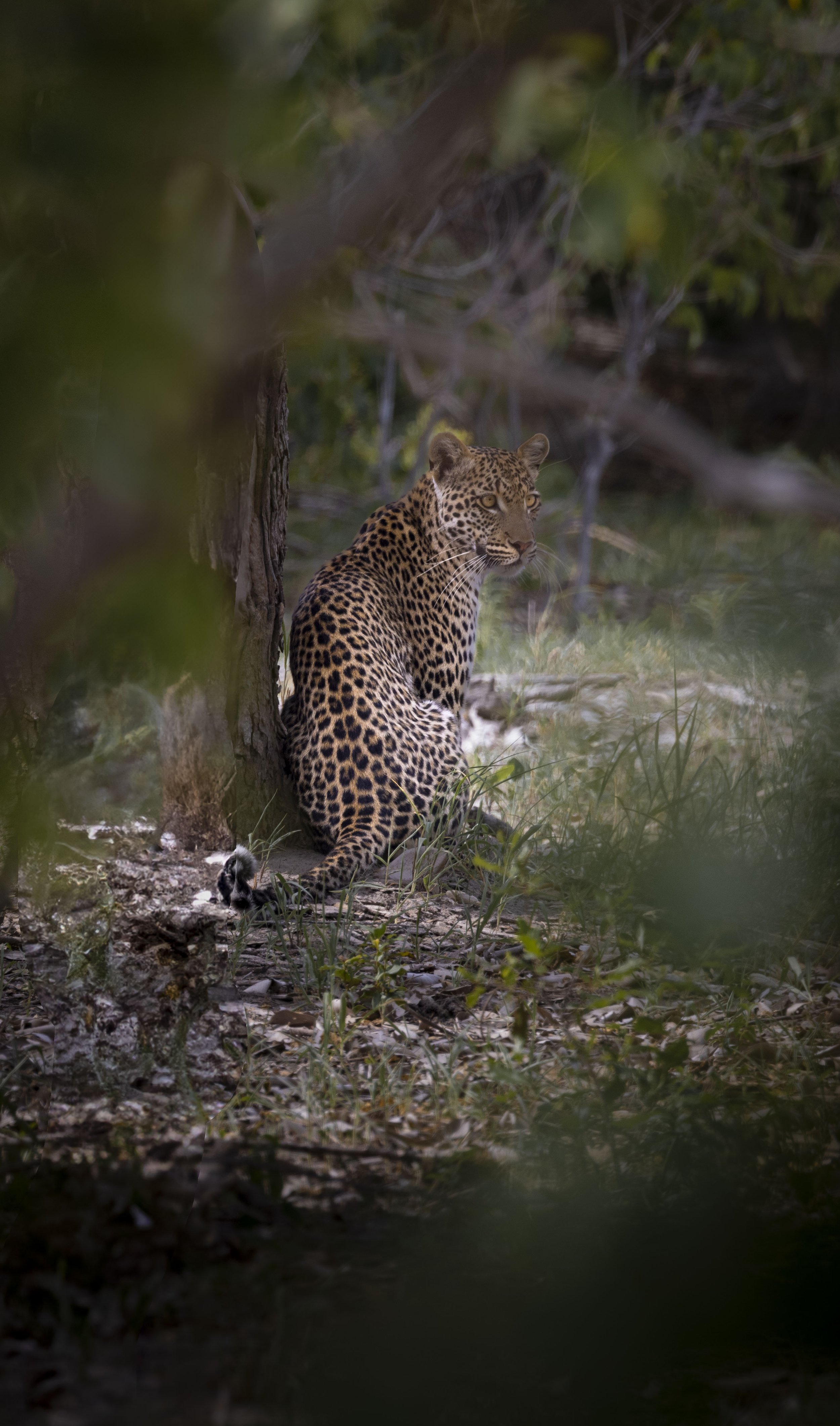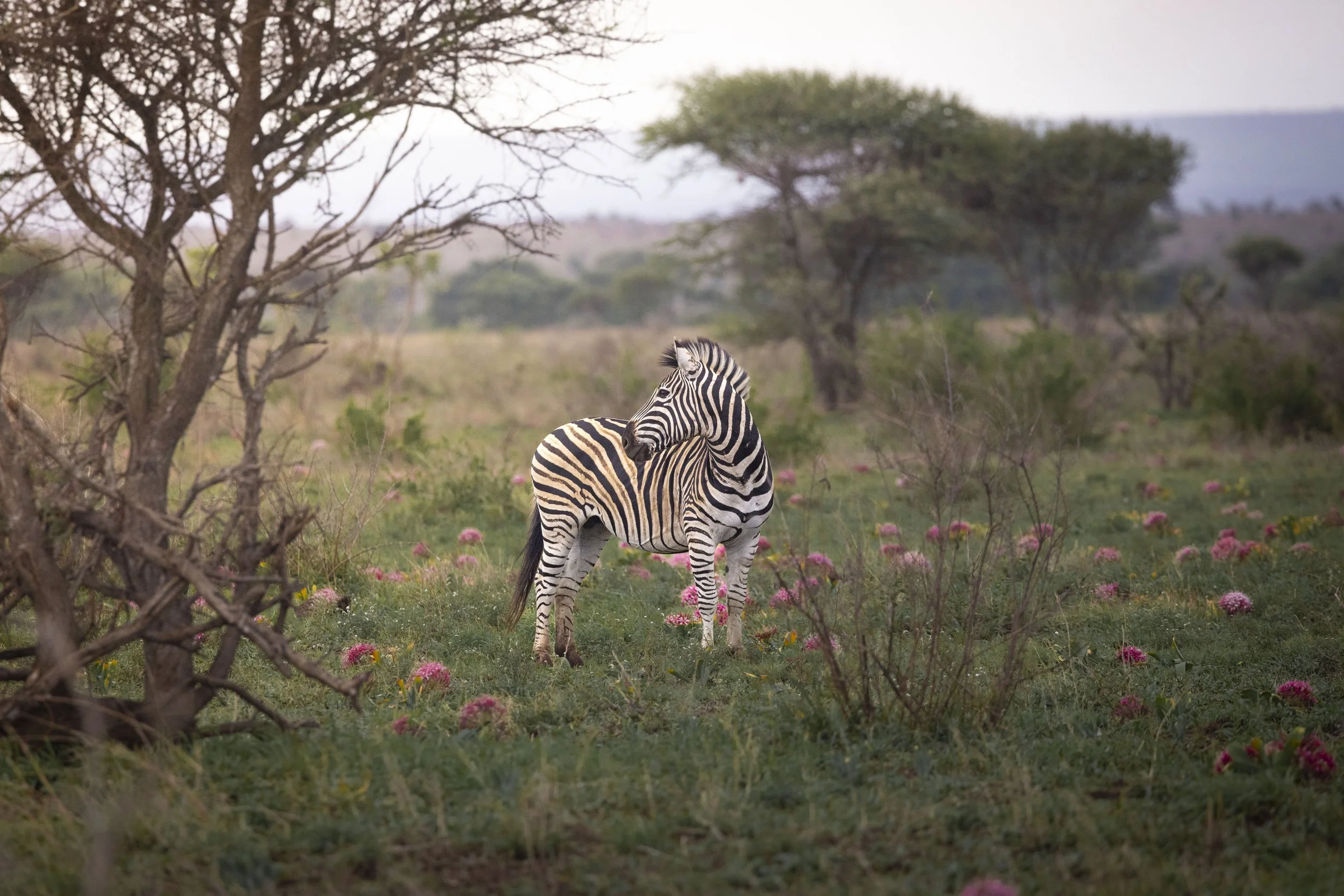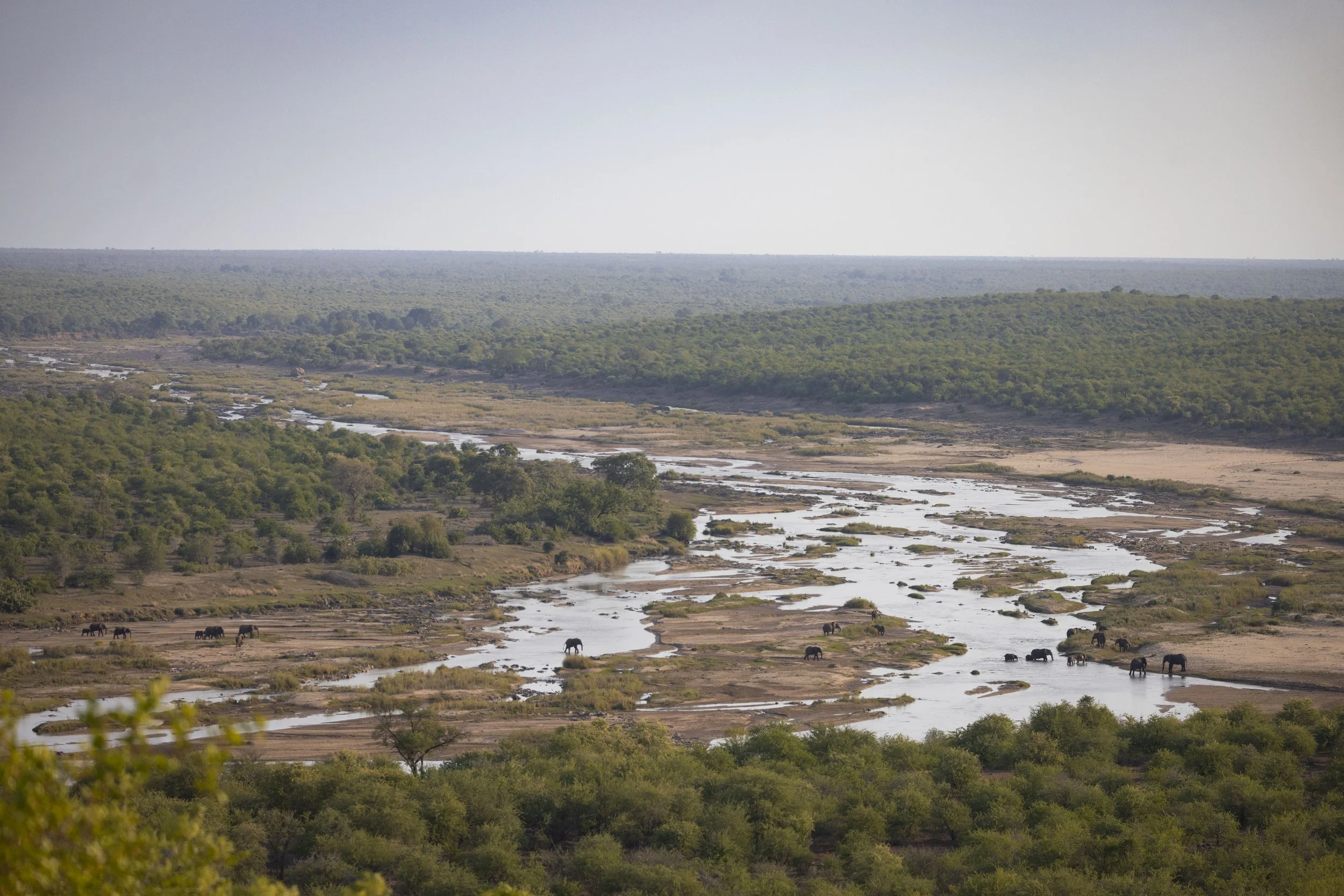Shaping the Future of Safari: A Year of Purposeful Exploration
The word safari comes from Swahili, meaning “journey.” This year, my work is focused on transforming those journeys into something greater—experiences that inspire, educate, and contribute to the conservation of Africa’s wild spaces. Through extensive proposals with leading luxury safari companies, I’m redefining what it means to explore the wilderness, ensuring that every guest’s journey leaves a lasting impact on both the traveler and the ecosystems they encounter.
As we step into 2025, I find myself reflecting on the evolving role of safari experiences. For too long, the industry has focused on indulgence—luxurious lodges, breathtaking landscapes, and bucket-list adventures. While these elements hold undeniable appeal, they often fail to address the deeper question: How can travel contribute to the preservation of the very wilderness it celebrates?
The word safari comes from Swahili, meaning “journey.” It’s a simple yet profound reminder that every safari isn’t just a trip—it’s an opportunity to be part of something larger than ourselves. This year, I’m working directly with leading luxury safari companies to redefine these journeys, ensuring they inspire action, foster understanding, and leave a lasting impact on the ecosystems they celebrate.
A New Chapter: Conservation Meets Connection
Luxury lodges serve as gateways to some of the world’s most breathtaking wilderness areas. They host travelers seeking unforgettable encounters with nature, but these experiences have the potential to transcend indulgence and become transformative journeys.
My focus this year is on integrating conservation principles into every facet of the guest experience. From purposeful storytelling to immersive activities that connect guests with ongoing environmental efforts, these designs elevate the role of the lodge itself—turning it into a meaningful participant in the conservation story.
The aim is to create guest journeys that are as enriching for the traveler as they are for the wilderness. By embedding conservation into the DNA of these experiences, we can ensure that each journey leaves an indelible legacy.
Why This Matters Now
Africa’s wilderness is at a crossroads. Habitat loss, climate change, and human-wildlife conflict threaten its future, but luxury safari companies have a unique opportunity to lead the charge in preserving it.
By designing guest experiences that align with conservation goals, lodges can harness their influence to create a ripple effect. Guests return home with a deeper appreciation for the ecosystems they’ve encountered, inspired to support their preservation. Meanwhile, lodges strengthen their own sustainability by tying their success to the well-being of the land and wildlife that surrounds them.
This is more than an industry trend; it’s a necessary evolution. The future of luxury safari lies in aligning the guest experience with the ongoing story of conservation.
Looking Ahead
As I continue to engage with leading luxury safari companies, I’m reminded of the immense potential these collaborations hold. Whether it’s through rebranding, conceptual design, or direct engagement with guest programming, the work this year will focus on creating experiences that are both innovative and impactful.
The most successful journeys are those that connect guests to something greater than themselves. For luxury lodges, this means embracing their role as stewards of conservation. For travelers, it’s about stepping into their journey knowing they’re contributing to the future of Africa’s wild spaces.
Join the Movement
If this resonates with you, I invite you to be part of this journey:
Travelers: Follow along as we reshape safari experiences. Sign up below for updates or explore opportunities to get involved.
Lodge Operators and Industry Professionals: Let’s connect to explore how intentional design can align with your conservation goals and elevate the journeys you offer.
Together, we can create something extraordinary—a safari experience that’s not only unforgettable but also a force for good.
Savute: Rain, Tracks, and Timeless Stories
Arrival Over the Okavango
Flying over the Okavango Delta is anything but ordinary. The rain had just passed, and the landscape below looked like it had been polished clean. Small green-yellow islands poked out of the shallow water which glistened on floodplains, reflecting the sky like shards of glass. From above, you could see the winding channels of the delta stretching out like veins, each one telling its own quiet story. Elephants crushing through the waist deep waters, crocodiles quickly disappearing, a glint of a hippo. Even from an aerial view, the Delta was very much alive.
When we landed, the smell of rain still hung in the air. The kind that sinks into the ground and lingers for hours. It felt like we’d arrived at exactly the right time — like the bush had been reset just before we stepped in.
A Welcome With Meaning
On the drive to Belmond's Savute Elephant Lodge, the bush didn’t take long to introduce itself. First, a red-crested korhaan strutted out in the open. For anyone unfamiliar with the korhaan, it’s a bird known for its confidence — and its unmistakable, staccato call. a banded mongoose darted across the road, its quick movements a flash of fur against the still-damp sand. Not far from there, John our guide smiled and called us "bringers of the rain," a small nod to local belief that good people bring good fortune. Given the timing of our arrival right only moments after the rain, it didn’t seem like a stretch. It’s one of those instances you nod at, half-smiling, wondering how often it turns out to be true.
We were met immediate at the entrance with an eager choir, “Dumela, welcome to Savute!” they resounded. As much as I wanted to capture that moment, more than anything I wanted to experience. Smiling, I soaked it in. Somehow, by evolving my dream, having the courage to sell myself, and a little luck, I was here. This moment was the physical manifestation that I could actually create a lifestyle surrounding what I love.
An Evening Gamble
After only a short respite we set out on an evening game drive. Normally, there’s a certain flow to tracking, scanning, and waiting. But this time, it was immediate. John received a radio call in isiXhosa and while I couldn’t discern it, I did pick up ‘ingwe’. There was a leopard out there. He informed us it was mobile and 8km out. It would be a rush and no guarantee of a sighting. Our original plan was to go look at bush paintings on a rocky outcrop and watch sunset from there. I deferred the decision to the other guest as I’d seen a leopard the day before at Kwapa and she was only there for a few days. More indecision led to me finally just saying, “Let’s gamble.”.
After what felt like only a few minutes drive, we noticed an over-landing vehicle parked at an angle with the driver pointing her telephoto lens into the bush. Sitting attentively, a lone leopard stared across an open floodplain at a herd of wildebeest with some young. You could could see the hunger, he was thin. Moments like that make you pause. You forget about the camera. You forget to speak. It’s just you, the leopard, and a shared space in a vast, wild world. The over-lander readjusts and he stands up, looks at our game viewer, and slowly walks beside us before deciding to sit down right in front of our car. RIGHT in front of our car. There is always a playful sense in sightings like these, a giddy anticipate to a moment that just keeps getting better and better.
Eventually, it moved on, but that moment stayed. I’ve seen leopards before, but it’s rare to see one in the open like that, unbothered and still.
Elephants and Thunder
Back at the lodge that night, thunder echoed in the distance, low and steady, like the bush breathing in and out. Lightning spread across the sky occasionally lighting up the bush below. Just beyond the lodge, three giant male elephants gathered at the waterhole. They moved with that same quiet patience elephants always seem to have, deliberate in every step.
Thunder, rain, elephants — it’s hard not to see the connection. It’s the rhythm of life here. No screens, no noise from outside life. Just this.
Tracks in the Sand
Tracking isn’t glamorous. It’s slow work, eyes on the ground, reading the sand like a story. That morning, we spent hours following leopard and lion tracks — paw prints left behind in the soft, wet earth. Every turn led to another track, and then another. But cats don’t move in straight lines. They weave. They backtrack. They disappear.
Eventually, we stopped for breakfast. Sometimes, you have to know when to let it go. As we unpacked the food and poured coffee, and soaked in the morning warmth.
The spot we stopped at felt older than time itself — a rock face bearing ancient paintings of wildlife. Giraffes, elephants, and other animals were etched into the stone, left there by the hands of people who lived off this land long before modern lodges and safari trucks existed.
Standing in front of those paintings, you feel something shift. You think about all the people who came here before you. Their days were spent walking these floodplains, not as visitors, but as part of the ecosystem. The animals they drew on the stone were not trophies or sightings for social media — they were stories, symbols of survival, and maybe even signs of gratitude.
The rock face wasn’t large, and there weren’t thousands of paintings, but it didn’t need to be. The stories etched into it said enough.
The lions we’d been tracking for hours were laying right there. Right there. No movement, no sign of struggle — just calm, resting lions not far from where we’d decided to stop.
If there’s a lesson in that moment, it’s this: You don’t always have to chase what you’re looking for. Sometimes, it’s closer than you think.
A Brunch With No Walls
We wrapped up our lion sighting with a brunch overlooking a dry floodplain. A lone male giraffe lazily brunched himself under an apple leaf tree. Bush brunches hit differently. No walls, no dining room, no ceiling — just open space and a table set on the floodplain. The food was as fresh as the air, and everything about it felt richer somehow. Maybe it’s the way the sunlight touches everything after the rain, or maybe it’s knowing that every sound around you could be something wild approaching.
These meals aren’t just about food. They’re about pause. It’s one of those rare moments in life where you slow down, not because you have to, but because it feels right. You’re sitting, eating, looking around, and suddenly you realize — you’re completely present.
The Flight Back to Maun
Flying out of Savute feels different than flying in. On the way in, you’re excited, looking for every animal below, scanning for wildlife. On the way out, it’s quieter. There’s reflection. There’s that pull you feel when you leave a place that still has more to teach you.
The water glistened below just as it had when we arrived, only this time, it felt like I understood it a little better. The floodplains, the tracks, the movement of the animals — it all made more sense now.
As the plane banked toward Maun, I watched the bush slowly fade into the horizon. You never really leave places like Savute. You carry them with you.
Closing Reflections
Savute isn’t just a destination on a map. It’s a place that stays with you long after you’ve gone. Every lion track, every leopard encounter, every drop of rain — it all sticks.
This wasn’t just another lodge experience. It was a reminder that no matter how many times you come to the bush, you’ll always leave with something new. The rain, the rocks, the roars — they’re all chapters in a story that’s been told for thousands of years.
If you'd like to follow along on the next chapter of this journey, stay tuned. There's always more to come.
I’m currently back home in Austin, Texas for the Christmas holidays. I’ll be in the states for some time and getting ready for the Dallas Safari Club convention in Atlanta, Georgia in early January.
Sign up below to be the first to know about what’s happening!
Kwapa: A Return to African Guide Academy
Returning to Kwapa Camp as a guest, not a student, revealed how much had changed — and how much had stayed the same. This time, I wasn’t racing to identify tracks or pass a test. I was here to reflect, observe, and prepare for the road ahead at Savute. These final three days in the bush were a powerful reminder that the wild doesn't just teach you about nature — it teaches you about yourself.
The Return to Kwapa
Bumbling down the sandy road in an open game viewer towards Kwapa Camp this time felt different. The last time I stood on this soil, I was a student — absorbing every ounce of knowledge I could from African Guide Academy's instructors. Now, I returned as something else entirely. Not a tourist, not a student, but not yet a master of the craft either. Somewhere in between. This time, I came back to witness it all through a different lens — both figuratively and literally.
The sights and sounds that once felt novel now had a sense of familiarity, but that didn’t make them any less awe-inspiring. Large herds of impala, wildebeest, and zebra grazed on the freshly emerging grasses, woodland kingfishers cried out their mating calls in the tress, and hot dry air beat itself against my skin. It was all still magic — just a quieter, more personal kind of magic.
Old Paths, New Perspectives
There’s a humility that comes with stepping away from the student role. As a student, every encounter feels like a test. Every track or alarm call is a puzzle you’re desperate to solve. But as a guest, I had the luxury of presence. I wasn’t racing to identify tracks or remember Latin names. I could just be.
The pressure was gone, but in its place was something else — clarity. I found myself more in tune with the subtle details I might have missed as a student. I respectfully yet tenaciously approached elephants at the watering hole, observing the details and signs of our unspoken boundaries. I knew the variety of voices calling out from the trees and, often, what they were on about. There was no checklist, no "pass or fail" feeling. Just raw, uninterrupted observation.
I sat quietly in the shade at midday, reprieving myself from the sweltering 105°+ temperatures, yet still observing the calculated movements of the animals — this observation was not just movement in the heat but the shift within me. I realized that what Kwapa had given me as a student was more than bushcraft skills. It had gifted me with an opportunity for patience, presence, and a deeper respect for the wild.
Wild Moments that Stay With You
No safari experience is complete without the unforgettable wildlife moments that etch themselves into memory. Over those three days, nature didn’t hold back.
On the first day it was the babies. Impala, zebra, giraffe, wildebeest, tssebe, elephants, and kudu all roaming with their young. Bat eared foxes, banded mongoose, wattled crane, hammerkops, and jackals all made their elusive appearances. When you go hours without sightings and the bush feels void, its amazing how a quick sighting of a unique species pulls something remarkable out of you. That silence and time builds an immense anticipation out from within you.
I laid on the ground with a pair of bat eared foxes, I sat just feet away from a bull elephant as he threw water from the borehole in playful annoyance with me, and most of all, I broke my bad muthi.
Africans are immensely superstitious. Many believe in the ways of black magic and seeing that cats had eluded me for over a month in over four different locations, I was starting to get superstitious too. On my last day at Kwapa I was still cat dry, no leopards, lions, cheetah, caracals, servals, or wild cats. Nothing.
I jokingly turned to one of the trainers and said that I think I must go see a muthi doctor in Maun as I was so dry on sightings. Ritchie turned and said stop focusing on the cats and the cats will come.
Approaching camp I saw a speckled mass disappearing into a thick sage brush, a white flash whipped in the air as I caught the tip of the tail. “LEOPARD!” I exclaimed as adrenaline rushed through my body. Everyone turned and saw nothing. “Are you sure?” I heard.
“I know what I saw.” I affirmed sternly.
We approached the sage and I was furiously searching the surrounding area. Cool and collected the driver Bernard slowly pointed across my face. “Jayce look next to you.”
Less than 10 feet away a young leopard was staring intently at us. He jumps up, snarls at the car in an aggressive jump, and quickly scurries off into the bush. We stayed with him for half an hour, never giving up his suspicion of us and remaining elusive within the bush. I was so relieved. My bad luck had passed. As we sat with the young male named “Kwapa Jr.” my day was made. I’ve never FOUND a cat before. I’ve seen many many leopards, lions, and even a cheetah with cubs, but when it’s you who pulls them out of the bush it is a rush like no other.
I broke my bad muthi.
How It Feels to Return to the Familiar
Returning to a place you once knew as a student is an emotional experience. There’s a subtle pride in seeing how far you’ve come, mixed with a bittersweet realization that nothing stays the same. The campfire stories weren’t the same without the familiar faces of my old classmates. But in their absence, I felt the weight of my own progress.
I realized something important: It’s not the place that changes, it’s you. While I was a student at Kwapa, a mentor named Alan McSmith shared with me that, no matter where you go to do the work, the work is always the same. We often travel as a means to find ourselves and subsequently believe these new experiences are catalysts for our inner change. Alan challenged that notion in that through this new environment you’re finally just allowing yourself to observe what has always been there. You can meet those parts of yourself anytime.
Kwapa Camp will always be the same wild, untamed space. The mopane trees will still dominate the boundaries. Small pans still scatter around the various environments. The elephant will still find their water. The leopards will still roam camp at night, but each return is different because you are different. This time, I wasn't a student grappling with imposter syndrome. I returned a storyteller, a photographer, and someone on a mission. This time, I came back with not just knowledge, but also a purpose.
The Road to Savute
This trip to Kwapa was more than a “goodbye” to a familiar place. It was a prelude. Later this afternoon, I’ll be headed to Savute Elephant Lodge, a place whose name alone evokes stories of elephants and predators locked in timeless battles. This time, I didn;t leave as a student. I’m left with intent, with purpose, and with a vision for something bigger than myself.
This moment of pause at Kwapa was necessary. It was a chance to remind myself of what brought me here in the first place — curiosity, passion, and a belief that I’m meant to play a role in something much larger than myself.
As I listened to the bush on my last night, I let it sink in. No deadlines. No assignments. Just the calls of the wild and the weight of knowing that the next time I return to Botswana, I’ll be chasing something much bigger than tracks. I’ll be chasing legacy.
Kwapa will always be part of that story.
Sign up with your email below to be the first to know what’s happening, where I am, and any information about upcoming workshops, safaris, and opportunities!
A Week Exploring Hoedspruit: Sashwa, Swadini Waterfall, and Kruger National Park
Explore the heart of South Africa's Lowveld with a journey through Hoedspruit. Discover the tranquility of Sashwa, the hidden beauty of Swadini Waterfall, and the wildlife wonderland of Kruger National Park—all captured through meaningful, unforgettable experiences.
Hoedspruit, South Africa, offers a unique blend of tranquility, adventure, and breathtaking natural beauty. Tucked away in the Lowveld, it serves as a gateway to some of the continent’s most iconic landscapes and unparalleled wildlife encounters. From the rolling savannas teeming with game to the dramatic escarpments and hidden waterfalls, Hoedspruit is a destination that invites visitors to connect with nature in profound and unforgettable ways.
Over the past week, I had the privilege of sharing this remarkable place with my girlfriend, introducing her to the charm and allure of the South African bush. Together, we explored Sashwa, a serene lodge that harmonizes sustainability and wellness; Swadini Waterfall, a hidden treasure within the majestic Blyde River Canyon; and the renowned Kruger National Park, a sanctuary for Africa’s most extraordinary wildlife.
Each experience highlighted Hoedspruit’s ability to offer both moments of quiet reflection and thrilling adventure, underscoring its reputation as a must-visit location for meaningful, once-in-a-lifetime experiences. Whether it was watching the sun set over the bush, feeling the mist of cascading waterfalls, or encountering the raw beauty of Kruger’s wildlife, the week was filled with memories that will stay with us forever.
Days 1-2: Immersing in Sashwa’s Tranquility and Vision
The first part of our journey was spent at Sashwa, a lodge dedicated to sustainability, wellness, and conservation. Sashwa is not just a place to stay; it is an experience designed to reconnect guests with the natural world. From the thoughtfully designed accommodations to the ethos of sustainable living that permeates every aspect of the lodge, Sashwa’s commitment to authenticity and environmental stewardship is inspiring.
During our time there, we participated in a branded photoshoot with the wonderful Maike McNeill (@honest.work). You might just see us on the Sashwa website in the near future! We also explored the surrounding landscape, observed wildlife up close, and learned more about the lodge’s dedication to integrating community and conservation. The atmosphere was peaceful yet invigorating, offering the perfect opportunity to recharge and reflect on the connection between hospitality and nature. Photographers will appreciate the lodge's careful design, which invites natural light and frames the beauty of the bush in every view.
Whether relaxing by the firepit under a blanket of stars or listening to the chorus of nature that envelops the lodge, Sashwa provided an ideal start to the week.
Day 3: Swadini – A Quadruple Waterfall Adventure
The next leg of the journey took us to the Swadini Waterfall, a hidden gem located in the majestic Blyde River Canyon. The drive alone, with its winding roads and sweeping vistas of rugged cliffs, is enough to take your breath away. The falls themselves are a sanctuary of tranquility, perfect for those who want to escape the noise of the modern world.
For those willing to venture along the edges of the waterfall, there’s an incredible reward: three more cascades tucked away, offering a private and breathtakingly serene experience. The interplay of water, light, and surrounding greenery created a dreamlike setting. We spent the afternoon immersed in the natural beauty, capturing photos and soaking in the soothing sounds of cascading water.
This stop served as a beautiful reminder that Hoedspruit’s charm lies not only in its wildlife but also in its awe-inspiring landscapes.
Days 4-5: Exploring Kruger National Park from Phalaborwa to Orpen
The highlight of the week was undoubtedly a two-day adventure in Kruger National Park, one of Africa’s premier safari destinations. Entering through Phalaborwa Gate, we journeyed through the park’s diverse ecosystems, brimming with wildlife and photographic opportunities. Staying overnight at Olifants Rest Camp elevated the experience, with its sweeping views of the Olifants River—a perfect vantage point for observing elephants, hippos, and crocodiles.
While we didn’t see all of the Big Five, the sightings we did have were nothing short of spectacular. From two chameleons crossing the road to red-crested korhaans performing their dramatic courtship dives, each moment felt special. Other highlights included observing hyenas mere feet from our vehicle, southern ground hornbills feasting on a squirrel, and an abundance of newborn wildlife exploring their environment.
As we exited through Orpen Gate, we reflected on the magical encounters and unforgettable moments that make Kruger such a cherished destination.
Hoedspruit: A Place of Inspiration and Connection
This week in Hoedspruit was a vivid reminder of why this corner of South Africa is so remarkable. Each destination offered something unique, yet they all shared a sense of harmony with nature and a deep-rooted connection to the land. Sashwa’s thoughtful tranquility provided the perfect start, blending sustainable living with immersive experiences. Swadini Waterfall showcased the region’s raw beauty and hidden wonders, while Kruger National Park delivered unforgettable wildlife moments that highlighted the magic of the African bush.
Hoedspruit is a destination that speaks to the heart of adventure and discovery. Whether you’re drawn to its landscapes, its wildlife, or the sense of peace it offers, there’s something here for everyone. For me, this week was not only about exploring but also about sharing these incredible experiences and stories—capturing the essence of what makes this region so special.
If you’re considering your own journey to Hoedspruit, I invite you to explore more through my Gallery or reach out for inquiries about workshops, safaris, or photographic projects. Let’s celebrate the beauty of Africa together.
Navigating the Wild Side of Business: My Journey in Safari, Lodge Branding, and Wildlife Conservation
This journey isn’t just about building a business—it’s about fostering real connections with people, places, and nature through lodge branding, wildlife photography, and conservation partnerships. I’m working alongside inspiring clients, including lodges and conservation organizations, to create experiences rooted in authenticity, purpose, and sustainability.
The journey I’m on with lodge branding, wildlife photography, and conservation partnerships isn’t just about building a business—it’s about fostering connections with people, places, and the planet in ways that feel real and valuable. My approach rejects the conventional five-star “luxury” pitch and instead embraces a philosophy of authenticity, sustainability, and storytelling. Every collaboration, every client I target, and every project I take on is about sharing a genuine story that people can feel part of.
Finding the Right Clients
I’ve learned that the best clients are the ones who are already rooted in a mission beyond business. For me, that means finding lodges, conservation organizations, and boutique properties that don’t just want growth but value a deeper purpose—whether that’s wellness, wildlife conservation, or cultural connection. My client list reflects this intention. I’m currently working with Sashwa, a wellness lodge that merges nature and healing. Sashwa and I share a vision for sustainability, mindfulness, and self-reflection making it a perfect partner as I build out a branding and guest engagement strategy that doesn’t gloss over its values but invites guests into them.
Another imerging partnership is with Ecoexist, whose work in human-elephant coexistence in Botswana holds special significance. Through this relationship, I’m exploring how branding can play a role in conservation, bridging the gap between local efforts and broader audiences. This type of client—driven by conservation impact—is a strong match for what I want my work to represent.
What I Offer: Authenticity over Luxury
Every time I pitch, I focus on what makes each client distinctive. I don’t pitch a pre-set “luxury” strategy; I pitch a personalized approach that brings out the character of the place. With Sashwa, that meant creating an experience rooted in the lodge’s natural healing philosophy. For Savute Elephant Lodge, where I’m in discussions, my is opening programs for them that get their guest involved in the conservation, not just catered to. Savute is already a powerhouse lodge in the infamous Savuti of Chobe National Park, so my work is ushering them from solely luxury focus to become the conservation name of Chobe. Bringing high end clientele luxury AND purposeful travel.
Each pitch is about enhancing what these lodges already have. I look for the quirks, the small details that make a lodge or organization stand out, and I build a strategy around that. My aim is to attract guests who connect with the property’s true essence, not just its surface-level appeal.
Partnering for Purpose
I’m lucky to be connecting with like-minded professionals and organizations who understand the value of authentic experiences. For example, Dr. Steve Boyes at the The Wilderness Project and I share a goal of enhancing conservation’s reach in Botswana, which opens doors to impactful work with a true legacy. The Wilderness Project operates as a US based nonprofit so there’s convenience to be at home and still make a difference, while also coming to the Okavango and other incredible African river systems to learn and tell the story of those ecosystems.
Looking Ahead
As I navigate this unique space, I’m constantly refining my approach. I’m focusing less on traditional marketing tactics and more on storytelling that’s grounded in truth. I’m blunt and open with managers, CEO’s, and founders. My time as Executive Director at SACRD taught me a lot of what those roles look like, what their problems are, and how I can position myself as their solution. The coming months will see me moving across southern Africa, diving deeper into projects that align with conservation, sustainable tourism, and community engagement. Every client and partnership I pursue supports this broader mission.
If this journey resonates with you, and you’re interested in following along as I explore the intersection of conservation, storytelling, and sustainable tourism, consider joining my newsletter. Each month, I’ll share insights from the field, updates on new projects, and reflections on the people, places, and wildlife that make this work so meaningful. You can find this at the bottom of the page.
